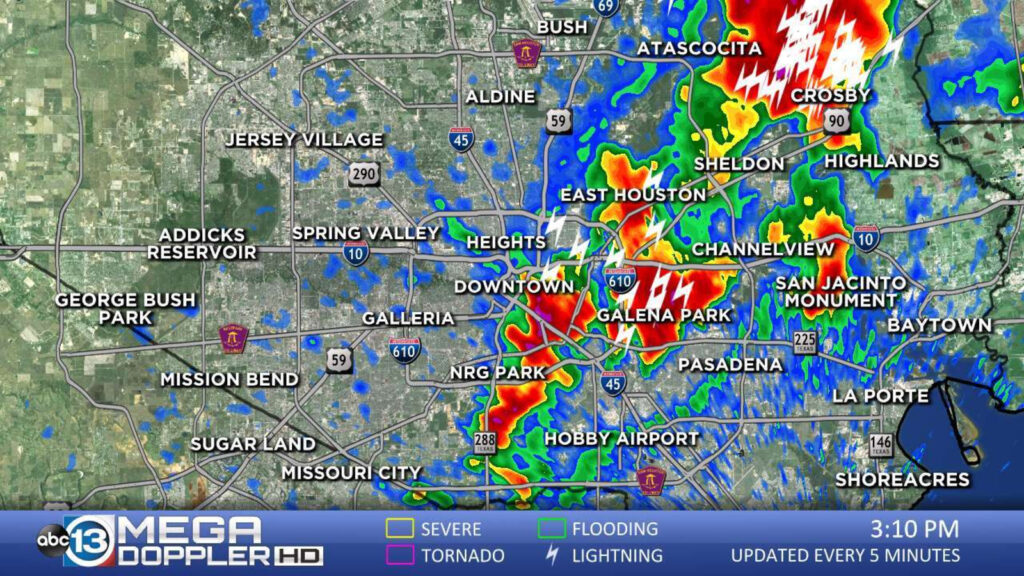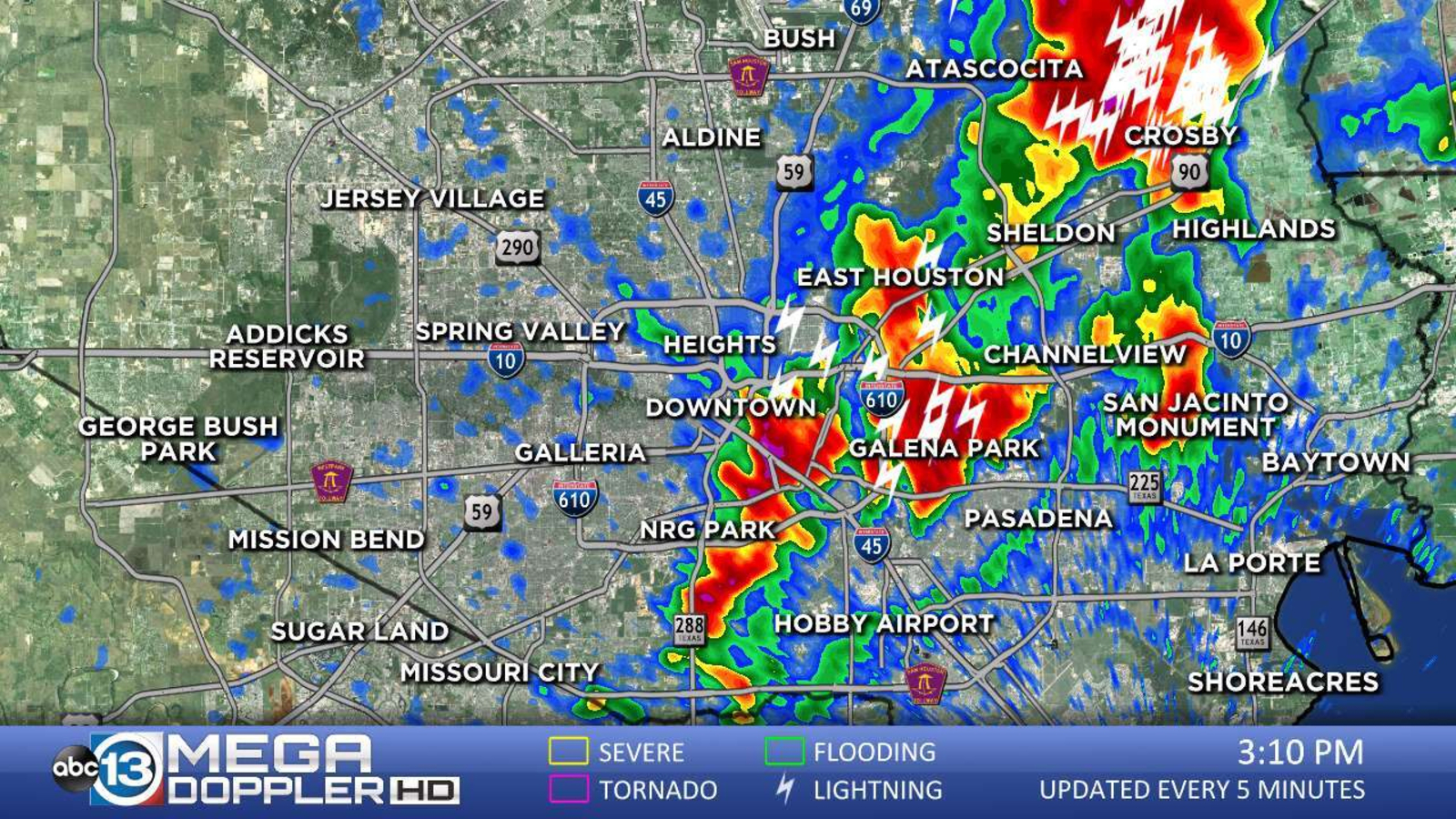
Navigating Houston’s Weather: Understanding the Houston Radar Systems
Houston, Texas, a sprawling metropolis known for its energy industry, diverse culture, and humid subtropical climate, faces a unique set of weather challenges. From torrential downpours and flooding to the occasional hurricane threat, understanding the local weather patterns is crucial for residents and businesses alike. A key tool in predicting and preparing for these events is the Houston radar system. This article delves into the specifics of Houston radar, exploring its capabilities, limitations, and how to effectively use it to stay informed and safe.
The Importance of Weather Radar in Houston
Given Houston’s geographical location near the Gulf of Mexico, the city is particularly vulnerable to severe weather. Hurricanes, tropical storms, and intense thunderstorms can bring significant rainfall, strong winds, and even tornadoes. Houston radar acts as an early warning system, providing crucial information about the location, intensity, and movement of these storms. By monitoring Houston radar, meteorologists can issue timely warnings and advisories, allowing residents to take necessary precautions.
The value of Houston radar extends beyond severe weather. It also helps in forecasting everyday weather conditions, such as the timing and intensity of rain showers, which can impact traffic, outdoor activities, and even agricultural practices. Accurate weather information empowers individuals and organizations to make informed decisions and mitigate potential risks. Understanding Houston radar is vital for everyone from commuters to construction workers.
Types of Weather Radar Used in Houston
The primary type of weather radar used in Houston, like most of the United States, is Doppler radar. Doppler radar works by emitting radio waves and analyzing the reflected signals. The frequency shift of the reflected waves, known as the Doppler effect, reveals the speed and direction of movement of precipitation particles. This allows meteorologists to not only detect precipitation but also to assess its intensity and track its movement.
Within the Doppler radar network, the NEXRAD (Next-Generation Radar) system is the most widely used. NEXRAD radars are strategically located across the country, including several around the Houston metropolitan area. These radars provide comprehensive coverage of the region, allowing for detailed monitoring of weather systems.
Another type of radar used in Houston is dual-polarization radar. This advanced technology emits radio waves in both horizontal and vertical orientations, providing more detailed information about the size, shape, and type of precipitation particles. This information can help distinguish between rain, snow, hail, and sleet, improving the accuracy of weather forecasts. Dual-polarization Houston radar is an invaluable tool for understanding the intricacies of weather events.
Understanding Houston Radar Images
Houston radar images are typically displayed as color-coded maps, with different colors representing different levels of precipitation intensity. Green and blue usually indicate light rain, while yellow, orange, and red represent increasingly heavier rainfall. Purple and magenta often signify the presence of hail or other severe weather conditions. Understanding this color scale is essential for interpreting Houston radar images.
In addition to the color-coded precipitation intensity, Houston radar images also display information about the movement of weather systems. Arrows or vectors indicate the direction in which storms are moving, while text annotations provide details about the location and timing of specific weather events. By carefully analyzing these elements, users can gain a comprehensive understanding of the current weather situation.
It’s crucial to remember that Houston radar images are just one piece of the puzzle. While they provide valuable information about precipitation, they do not tell the whole story. Factors such as temperature, humidity, and wind patterns also play a significant role in determining the overall weather conditions. Therefore, it’s always best to consult multiple sources of information, including weather forecasts and advisories, to get a complete picture.
Accessing Houston Radar Information
There are numerous ways to access Houston radar information. Many local television stations and news websites provide real-time radar updates, often with interactive maps that allow users to zoom in and out and view different layers of information. These websites and apps often provide detailed analysis from meteorologists. [See also: Local Houston News Channels]
The National Weather Service (NWS) website is another excellent source of Houston radar information. The NWS provides access to radar images, forecasts, and advisories for the entire country, including the Houston area. The NWS website also offers educational resources about weather phenomena and how to interpret radar data.
Mobile apps are also a convenient way to access Houston radar information on the go. Many weather apps provide real-time radar maps, as well as alerts and notifications about severe weather events. Some apps even offer customized alerts based on your location, ensuring that you receive timely warnings about potential hazards. Staying connected with a reliable weather app is a smart way to stay informed and safe.
Limitations of Radar Technology
While Houston radar is a powerful tool for weather forecasting, it is not without its limitations. One limitation is that radar beams can be blocked by mountains or other terrain features, creating blind spots in coverage. This can be particularly problematic in areas with complex topography. Understanding the limitations of Houston radar is key to interpreting the data correctly.
Another limitation is that radar can sometimes be fooled by non-precipitation targets, such as birds, insects, or even ground clutter. These false echoes can appear as precipitation on radar images, leading to inaccurate forecasts. Meteorologists use various techniques to filter out these false echoes, but they can still occasionally cause confusion.
Additionally, radar can sometimes underestimate the intensity of precipitation, especially in areas far from the radar site. This is because the radar beam spreads out as it travels, reducing its sensitivity to precipitation. To compensate for this effect, meteorologists use mathematical models to adjust the radar data and improve its accuracy.
Tips for Using Houston Radar Effectively
To use Houston radar effectively, it’s important to understand its capabilities and limitations. Here are a few tips to keep in mind:
- Pay attention to the color scale: The color scale on Houston radar images indicates the intensity of precipitation. Use this information to gauge the severity of weather events.
- Look at the movement of weather systems: Arrows or vectors on radar images indicate the direction in which storms are moving. Use this information to anticipate the arrival of weather events.
- Consult multiple sources of information: Houston radar is just one piece of the puzzle. Always consult multiple sources of information, including weather forecasts and advisories, to get a complete picture.
- Be aware of the limitations of radar technology: Radar can be blocked by terrain features, fooled by non-precipitation targets, and can underestimate the intensity of precipitation. Keep these limitations in mind when interpreting radar data.
- Stay updated: Weather conditions can change rapidly, so it’s important to stay updated on the latest radar information. Check radar images and forecasts regularly, especially during periods of severe weather.
The Future of Weather Radar in Houston
The technology behind Houston radar is constantly evolving. Advancements in radar technology are leading to more accurate and detailed weather forecasts. For example, phased array radar, which uses multiple antennas to scan the atmosphere more quickly, is being developed to provide faster updates on severe weather events. These rapid scans can help meteorologists track fast-moving storms and issue timely warnings.
Another area of development is the use of artificial intelligence (AI) and machine learning to analyze radar data. AI algorithms can be trained to identify patterns and trends in radar data that might be missed by human analysts. This can lead to more accurate forecasts and improved warnings of severe weather events. The future of Houston radar is bright, with ongoing advancements promising to enhance our ability to predict and prepare for weather challenges.
Staying Safe During Severe Weather in Houston
Understanding Houston radar is a crucial component of staying safe during severe weather events. However, it’s also important to have a comprehensive safety plan in place. This includes knowing the difference between a weather watch and a warning, having a designated shelter location, and stocking up on emergency supplies.
A weather watch means that conditions are favorable for severe weather to develop in the area. During a weather watch, it’s important to stay informed and monitor weather updates closely. A weather warning, on the other hand, means that severe weather is imminent or occurring in the area. During a weather warning, it’s important to take immediate action to protect yourself and your family.
Having a designated shelter location is also crucial. This could be a basement, a storm cellar, or an interior room on the lowest floor of your home. Make sure that everyone in your family knows where the shelter location is and how to get there quickly.
Finally, it’s important to stock up on emergency supplies. This includes food, water, medication, a flashlight, a battery-powered radio, and a first-aid kit. Having these supplies on hand can help you weather a severe weather event safely and comfortably. [See also: Houston Emergency Preparedness Guide]
In conclusion, Houston radar is an indispensable tool for navigating the city’s challenging weather conditions. By understanding its capabilities, limitations, and how to access and interpret radar data, residents and businesses can make informed decisions and stay safe during severe weather events. Staying informed, prepared, and proactive is the key to weathering any storm that comes Houston’s way. Understanding the Houston radar systems is a great first step.

